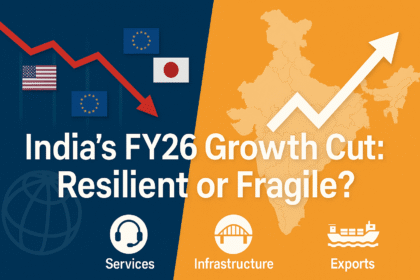Written By: Nishant Parsad
Imagine walking into a paint store 3 years ago. The shopkeeper already knows what you want —probably an Asian Paints Royale or a Berger Easy Clean. You didn’t question the brand. You didn’t think twice about the price. And the shopkeeper didn’t need to convince you either.
Because for decades, the Indian paint market has been one of the most unchallenged and stable industries. A few players ruled the game. There was trust. There was dominance. And most importantly, there was no real war.
Until now. Something is brewing beneath the surface of this ₹53,000 crore industry. Two new
challengers — one backed by the Birla empire, the other by JSW Group — have entered the ring. And this time, they’re not here to play catch-up. They’re here to break the paint monopoly.
The Old Paint Kingdom
Before we talk about the war, let’s understand the peaceful kingdom that existed. The Indian paint industry, especially the organized market, is worth over ₹53,000 crore. Of this, just five companies control 95%. The king of this empire is Asian Paints, holding a jaw-dropping 59% market share. Behind them trail Berger (17%), Kansai Nerolac (12%), andAkzo Nobel India (7%), the makers of the premium Dulux brand.
The reason these companies stayed unbeatable for decades wasn’t just product quality. It
was a mix of:
– An unmatched dealer network
– Trust built over generations
– Predictable urban & rural demand
– And… a total lack of disruption
For years, nobody dared to challenge them seriously.
But every kingdom eventually faces rebellion.
Enter Birla Opus – The Silent Earthquake
In the middle of what looked like another predictable financial year, a new name quietly entered: Birla Opus. It wasn’t just a new brand. It was Grasim Industries — the industrial arm of the Aditya Birla Group — entering the paint business with one of the boldest bets India has ever seen
in this space: ₹10,000 crore. Now here’s the twist. When Grasim launched Birla Opus, the demand in the industry was already falling. According to Amit Syngle, CEO of Asian Paints, FY24 witnessed the worst paint demand environment in the last 20 years. People in urban India were delaying home renovations. Real estate sales slowed down. Even Tier-2 and Tier-3 cities saw muted repainting activity.
It was like entering a boxing ring when everyone else was already bruised.
And yet, Birla Opus didn’t wait.
The Disruption Playbook
What Birla Opus did next was classic disruption:
- They priced their paints lower than competitors
- Offered deep dealer incentives, tempting many to stock Opus products
- Hired top talent directly from legacy paint companies
- And most importantly — started taking away market share
This wasn’t some polite new player. This was a deliberate, cold-blooded strategy to shake
the industry at its weakest moment.
And just when the incumbents were still figuring out how to defend…
Enter JSW – The Masterstroke That Changed the Game
In June 2025, another giant entered the battlefield — this time with a very different strategy. JSW Paints, which until now was a relatively small player with just 3–4% share in the decorative segment, announced it was acquiring a 75% stake in Akzo Nobel India (Dulux) in a deal worth ₹9,000 crore.
Let that sink in: JSW, known for steel and cement, just bought one of the most premium, trusted paint brands in the country.
But why is this such a big deal?
Let’s break it down.
What JSW Gets from Dulux?
– A Fast-Track to Market Share
JSW had ~210 million litres of installed capacity. Dulux brings in another ~350 million. Now,
their combined capacity hits nearly 600 million litres — putting them in the same league as
Berger and Nerolac, and easily making them the No. 2 in industrial coatings.
They’re now just steps away from their 10% market share target for 2026, and may hit it a
year earlier.
– Access to Premium Urban Markets
Dulux is a trusted premium brand in urban India. JSW didn’t just buy a company — they
bought instant brand equity in a segment where they were barely visible.
– Entry into Industrial Paints
Dulux is strong in the industrial coating segment — from OEMs to infrastructure. That’s an
entirely new vertical JSW now owns.
This wasn’t just a capacity expansion. It was a category shift, a branding upgrade, and a
demand hedge — all in one move.
The Industry Is Now Split!
With Birla Opus attacking with scale and pricing, and JSW strengthening itself with Dulux’s
brand power — the Indian paint market has been redrawn.
We now have two warring factions:
The Old Guard:
– Asian Paints
– Berger Paints
– Kansai Nerolac
The New Titans:
– Birla Opus (Grasim)
– JSW Paints + Akzo Nobel (Dulux)
And in between all this? The biggest war the industry has seen in decades.
Pricing Wars Have Begun
Here’s what this battle means:
– Prices will drop. Dealers will get offers from both sides.
– Margins will shrink. Legacy companies may have to protect their turf with discounts.
– Brand loyalty will be tested. When dealers get better margins from newer players,
loyalty may fade.
– Advertising and promotions will rise. Expect more paint ads than ever before.
It’s like telecom in 2016 — when Jio entered. Only this time, it’s the walls of your home that are
caught in the crossfire.
Who Wins in the Short Term? It’s You.
As a consumer, you’re likely to benefit.
– Lower prices
– Better packaging and quality
– Improved dealer service
– Faster innovations
But behind the scenes, for the companies themselves, it’s going to be survival of the fittest.
Final Thoughts: Who Will Repaint the Future?
In just 12 months, a peaceful ₹53,000 crore industry has turned into one of the most high-stakes business battlegrounds in India.
With Birla Opus investing ₹10,000 crore in greenfield plants, and JSW betting ₹9,000 crore on acquiring Dulux — we’re witnessing the kind of disruption that rewrites market history.
Asian Paints may still be the king today.
But in war, kings fall — if they don’t adapt.
So the question is not who is leading today —
It’s who will survive tomorrow?
Stay tuned. Because this war is just getting started.







